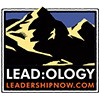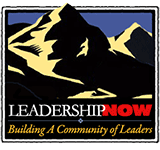
|
 |
Your Leadership Legacy: Why Looking Toward the Future Will Make You a Better Leader Today Robert M. Galford and Regina Fazio Maruca 
Format: Hardcover, 194pp. ISBN: 9781591396178 Publisher: Harvard Business School Press Pub. Date: September 12, 2006 Average Customer Review: For Bulk Orders Call: 626-441-2024 Excerpt from Your Leadership Legacy From the Introduction Is it ever too early to think about the kind of long-term impact you’ll have on your organization? Is it ever too early to think about what people will think, say, or do, after your tenure as a leader has ended, as a result of having worked with you? We think the answer to both questions is no. It’s never too early to think about the kind of influence your leadership will have after you’ve retired or taken a position with another company. In fact, we believe that the earlier leaders begin to consider their leadership legacy, the better leaders they will be. Much of the time, people begin to consider the overall impact of their leadership when they’re about to retire or when they’re moving on to a senior-level job in another company. The legacies they’ve formed at work are faits accompli, and the leader, looking back, is sometimes faced with a host of unsettling could haves and would haves. This short book proposes to turn that common behavior on its head. The central idea is that one’s desired leadership legacy should be a catalyst for action rather than a result considered after the fact. Why? It’s because as best as we can tell, you have only one chance in this world, so it’s important not to waste it. And if recent, quarterly, or even yearly results are your only benchmark, you might accomplish only small, discontinuous wins and never have the kind of impact you could have as a manager or a leader. By contrast, being intentional about your desired long-term impact helps you both in the short run and in the long run. This book offers lessons that have emerged from our experiences working with and talking to CEOs, professionals, and executives from a wide range of organizations, including Fortune 100 companies, global nonprofit entities, large banks, and small design firms. Rob’s extensive experience includes working for more than thirty years with top and senior-level executives from a wide variety of organizations. For the first fifteen years of his career, he was a consultant and adviser in the world of professional services; in the past fifteen years, he has worked more closely, and often one-on-one, with high-performing senior executives from a wide range of organizations, listening to them, teaching them, and following their progress. Regina has spent the better part of her professional career listening to senior-level managers and helping them clarify their thinking, first in her capacity as an editor at Harvard Business Review and, more recently, working with Rob at the Center for Executive Development in Boston. Specifically for this book, we also spoke with recently retired top managers, senior managers whose retirements were imminent, CEOs in midcareer, and a host of new leaders. (As often as possible, these executives are identified by name in the book. For privacy reasons, however, many of the executives who shared stories of frustration, or stories of hardship, have been given aliases.) In the course of our conversations, these leaders helped us develop and refine the idea of using a legacy as a forward-thinking tool. They also helped us hone the definition of what a leadership legacy should be. We found that the more people reflected on the impact of their leadership, the less often they described it in professional or corporate terms. They spoke of the aspirations they have for the companies they manage, but increasingly they attributed importance to the one-to-one influence they might have on colleagues, direct reports, and the people in the organization at large. The more they thought, the more they also began to talk about their desired work legacies in personal terms. “I hope that my legacy at work will be the same things for which my family will remember me, and be proud of” was a common theme. Put simply, we found that looking forward, people wanted to achieve success in organizational or performance terms. But looking back, they wanted to know that their efforts were seen—and felt—in a positive way by the individuals they worked with directly and indirectly. We also heard, however, how difficult it is to take the time to consider such personal legacies in the course of running a company. Big-picture thinking about the long-term impact of a leader’s actions—in terms of corporate growth or direction—is built into the strategic process at most companies. But the same can’t be said of the long-term impact of a leader’s influence on colleagues and employees, even though that’s the realm in which most of the leaders we spoke with ultimately wanted to make a lasting and significant difference. As one executive summed up, “I want my leadership to have a positive and lasting effect on the company, of course. But when I think about how I want to be remembered, or about how I would like to think I influence others, it’s a very personal thing. The issue is that there isn’t an opportunity to connect those personal aspirations with the day-to-day work of running the company. It’s like there’s a way to think about long-term performance, on the company level. And in the course of ‘performing,’ there are these opportunities to make a difference on a personal level. But there’s a divide; there’s no way to connect the two.” In practical terms, this book’s first goal is to bridge that divide. Most senior managers well understand the intrinsic link between daily behavior and long-term impact. That understanding, however, is usually implicit. The structure we propose in this book—what we call legacy thinking—makes the link explicit. Legacy thinking is a tool through which leaders can filter and assess their decisions. It provides the kind of perspective that rarely makes it to the table in the course of the daily pressures of running an organization. It also serves as a powerful check to help leaders ensure that their priorities—personal and organizational—are reflected in their actions. This book’s second goal is to help great leaders leave positive legacies. Successful companies almost always have strong leaders, but sometimes organizational success comes at a personal price. All of us can name people who built financially successful companies at the cost of personal relationships or their own satisfaction. We can also name people who excelled at driving a company forward but left peers and direct reports vowing, “I’m never going to behave that way.” Did they produce positive results, in terms of the organization’s success? Yes. But they left negative leadership legacies. When top managers leave in their wake strong companies and individuals who can perpetuate that strength in a positive and healthy way, the result is both leadership and legacy at their best. Ultimately, that’s what we’d like to help leaders achieve. ©August 2006 Bob Galford and Regina Maruca |
|

The Essential Lists BOOKS TO READ BEFORE YOU LEAD 
Grow Your Leadership Skills NEW AND UPCOMING LEADERSHIP BOOKS 
Classic Leadership Books BOOKS TO READ BEFORE YOU LEAD |
||||||
 |
| ||
 | © 2023 LeadershipNow™ All materials contained in https://www.LeadershipNow.com are protected by copyright and trademark laws and may not be used for any purpose whatsoever other than private, non-commercial viewing purposes. Derivative works and other unauthorized copying or use of stills, video footage, text or graphics is expressly prohibited. |
||